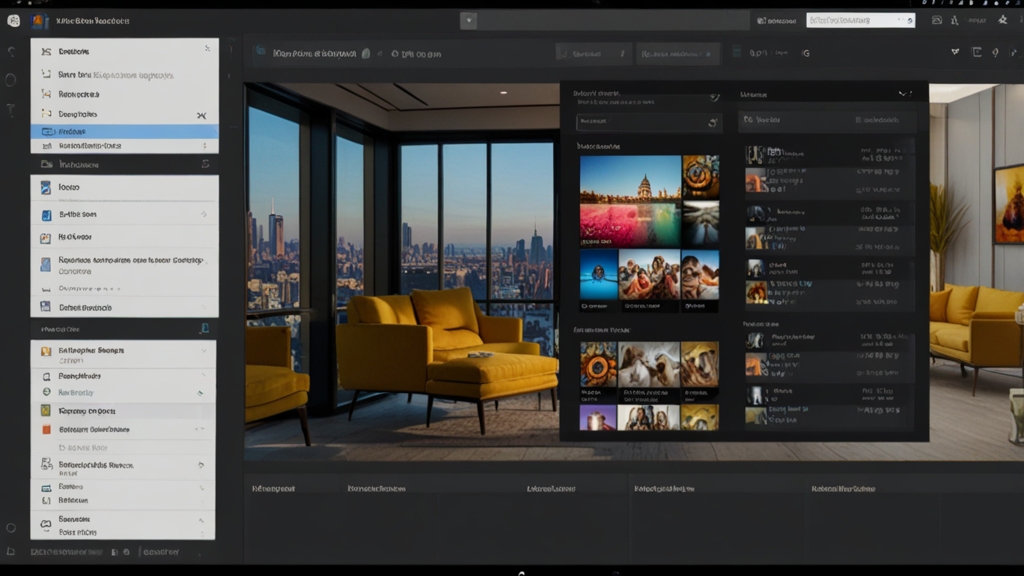World’s Top 10 Fighter Jets: The Best of Air Warfare
New generation fighter jets are the backbone of a country’s air power, with speed, firepower, stealth, and state-of-the-art avionics. Here in this blog, we examine the world’s top 10 fighter jets based on their capability, technology, and combat prowess.

1. Lockheed Martin F-22 Raptor (USA)
The F-22 Raptor is widely regarded as the world’s best air superiority fighter because of its unparalleled stealth, maneuverability, and advanced avionics.

Key Features:
- Stealth Technology: Radar cross-section as small as a bumblebee.
- Supercruise: Mach 1.8 without afterburners.
- Advanced Avionics: AESA radar, sensor fusion, and electronic warfare capabilities.
- Weaponry: AIM-120 AMRAAM, AIM-9 Sidewinder missiles, and a 20mm Vulcan cannon.
- Operational Role: Air dominance and precision strikes.
In-Depth Overview:
The F-22 Raptor was created by Lockheed Martin to counter the rising threat of hostile air forces. With a fusion of stealth, speed, and advanced sensor integration, the F-22 is able to strike multiple targets with ease while not being detected. Its supercruise feature enables it to fly at supersonic speeds without using afterburners, providing an advantage over foes. The thrust-vectoring nozzles of the fighter improve its agility, placing it among the most maneuverable in the world.
2. Lockheed Martin F-35 Lightning II (USA)
A 5th-generation multirole fighter, the F-35 is acclaimed for its multi-functionality, stealth, and network-centric warfare capability.

Key Features:
- Variants: F-35A (CTOL), F-35B (STOVL), F-35C (Carrier-based).
- Stealth: Lowered radar signature to ensure survivability.
- Armament: Internal and external hardpoints to carry guided missiles, bombs, and a 25mm GAU-22 gun.
- Operational Function: Air supremacy, ground attack, and electronic warfighting.
Detailed Description:
The F-35 is meant to replace a broad variety of old planes, such as the F-16, A-10, and AV-8B Harrier. With three various models, the aircraft is adapted for different operational purposes. The F-35A is the conventional takeoff and landing jet, while the F-35B is capable of vertical takeoffs and landings. The F-35C, with increased wings, is designed for carrier use. With its stealth technology and sophisticated sensor suites, the F-35 allows pilots to see and destroy threats before they are seen themselves.
3. Sukhoi Su-57 Felon (Russia)
Russia’s first stealth fighter, the Su-57, marries supermaneuverability with advanced stealth technology.

Key Features:
- Supermaneuverability: Thrust vectoring engines enable extreme maneuverability.
- Armament: R-77 and R-74 missiles, Kh-59 cruise missiles, and internal guns.
- Stealth Capabilities: Radar-absorbent materials and internal weapons bays.
- Operational Role: Air superiority and multirole operations.
Detailed Overview:
The Su-57 Felon was designed by Sukhoi to be Russia’s answer to Western stealth technology. The Su-57 differs from the F-22 and F-35 in focusing on maneuverability, employing thrust-vectoring engines to provide unparalleled agility. It also has an advanced sensor package and AI-targeting systems. Nevertheless, even with its advanced technology, the Su-57 has encountered delays in production and integration, bringing into question its operational performance in comparison to its American counterparts.
4. Chengdu J-20 Mighty Dragon (China)
China’s answer to the F-22 and F-35, the J-20, is a stealth, long-range, air superiority fighter intended to counter Western hegemony.

Key Features:
- Stealth Design: Forward-swept canards and blended fuselage to minimize radar signature.
- Arms: PL-15 long-range air-to-air missiles, PL-10 short-range missiles.
- High-Tech Avionics: AESA radar and electronic warfare suites.
- Operational Role: Air dominance and deep strike missions.
Detailed Overview:
Designed by Chengdu Aerospace Corporation, the J-20 Mighty Dragon signifies China’s effort to challenge America in stealth warfare. Contrary to conventional Western designs, the J-20 has canards, enhancing its maneuvering and range. The aircraft is said to have long-range air-to-air missiles, with which it can attack enemy aircraft before detection. Experts question whether the J-20’s stealth technology equals that of American planes.
5. Dassault Rafale (France)
The Rafale is an extremely versatile 4.5-generation French fighter aircraft manufactured by Dassault Aviation.

Key Features:
- Multirole Capability: Air-to-air combat, ground strike, reconnaissance, and nuclear deterrent.
- Weaponry: Carries Meteor, MICA, SCALP, and Exocet missiles.
- Avionics: AESA radar, Spectra electronic warfare system, and advanced sensor fusion.
- Operational Role: Famous for its capability to fly from aircraft carriers and land bases.
Detailed Overview:
The Rafale was developed to satisfy the different requirements of the French military and is operated by a number of nations, including India, Egypt, and Qatar. It possesses sophisticated stealth improvements, an active electronically scanned array (AESA) radar, and high maneuverability, hence being one of the most potent 4.5-generation combat aircraft in existence.
6. Eurofighter Typhoon (Europe)
A collaborative effort of the UK, Germany, Italy, and Spain, the Typhoon is among the most sophisticated 4.5-generation fighter aircraft in operation.

Key Features:
- Supercruise Capability: Supersonic flight at high altitude without the use of afterburners.
- Weaponry: Meteor, AMRAAM, ASRAAM, Brimstone missiles, and precision-guided bombs.
- Avionics: Captor-E AESA radar, helmet-mounted display system.
- Operational Role: Air superiority, ground attack, and reconnaissance.
Detailed Overview:
The Eurofighter Typhoon has an air-to-air combat advantage through its high thrust-to-weight ratio and sophisticated avionics. It is employed extensively by NATO allies and has been used in numerous combat missions. Upgrades are on the cards for the future, such as greater stealth and improved sensors.
7. Boeing F-15EX Eagle II (USA)
The F-15EX is a modernized version of the iconic F-15 Eagle, intended to ensure air superiority in high-threat situations.

Key Features:
- Heavy Payload Capability: Supports up to 22 air-to-air missiles.
- Arms: AIM-120 AMRAAM, AIM-9X Sidewinder, JDAM, and hypersonic missiles.
- Speed and Performance: Top speed of Mach 2.5, operational range of 3,500 km.
- Operational Role: Air dominance, deep strike, and electronic warfare.
In-Depth Overview:
The F-15EX has a digital cockpit, improved avionics, and the capability to carry advanced hypersonic missiles. It is still a prime asset for the U.S. Air Force, offering superior combat performance and mission flexibility.
8. Sukhoi Su-35S Flanker-E (Russia)
The Su-35S is a cutting-edge 4.5-generation fighter, designed as an upgrade to the legendary Su-27 Flanker.

Key Features:
- Supermaneuverability: Thrust-vectoring engines for ultimate agility.
- Armament: R-77, R-73 missiles, guided bombs, and precision weapons.
- Speed and Range: Mach 2.25, over 3,600 km range.
- Role in Operations: Air dominance and multirole missions.
In-Depth Overview:
With its state-of-the-art avionics and high maneuverability, the Su-35S is a formidable presence in the Russian Air Force. It acts as a bridge between older-generation fighter aircraft and the more advanced Su-57.
9. McDonnell Douglas F/A-18E/F Super Hornet (USA)
A carrier-capable multirole fighter, the Super Hornet forms the spine of the U.S. Navy.

Key Features:
- Weaponry: AIM-9, AIM-120, Harpoon anti-ship missiles, JDAM bombs.
- Stealth Enhancements: Lower radar cross-section and sophisticated jamming systems.
- Carrier Capable: Catapult launched and arrested recovered.
- Operational Role: Air superiority, fleet defense, and strike missions.
Detailed Overview:
The Super Hornet is a further development of the F/A-18 Hornet, boasting greater range, avionics, and armament capacity. It has an integral part in carrier strike groups, providing air superiority and ground support.
10. Saab JAS 39 Gripen (Sweden)
The Gripen is a light, highly agile, and affordable fighter aircraft produced by Saab.

Key Features:
- Multirole Operations: Air-to-air, air-to-ground, reconnaissance.
- Weapons: Meteor, IRIS-T, RBS-15 missiles, laser-guided bombs.
- Avionics: AESA radar, electronic warfare, and data-link technology.
- Operational Role: Air defense, strike, and reconnaissance.
Detailed Overview:
The Gripen is characterized by its low operational costs, making it a viable choice for smaller air forces. Its networked warfare capability ensures that there is smooth communication with allied forces, ensuring battlefield awareness and operational effectiveness.
Conclusion
The fighter jets covered under this two-part series are the crème de la crème of contemporary military aviation. While 5th-generation aircraft such as the F-35 and Su-57 prioritize stealth and state-of-the-art avionics, 4.5-generation fighters such as the Rafale, Typhoon, and Su-35S still rule roost with their agility and firepower. With ongoing improvements in AI, hypersonic weapons, and stealth technologies, the next decade will see a new era of aerial combat supremacy.
Click the below button to know which of these plain participated in Aero India 2025









